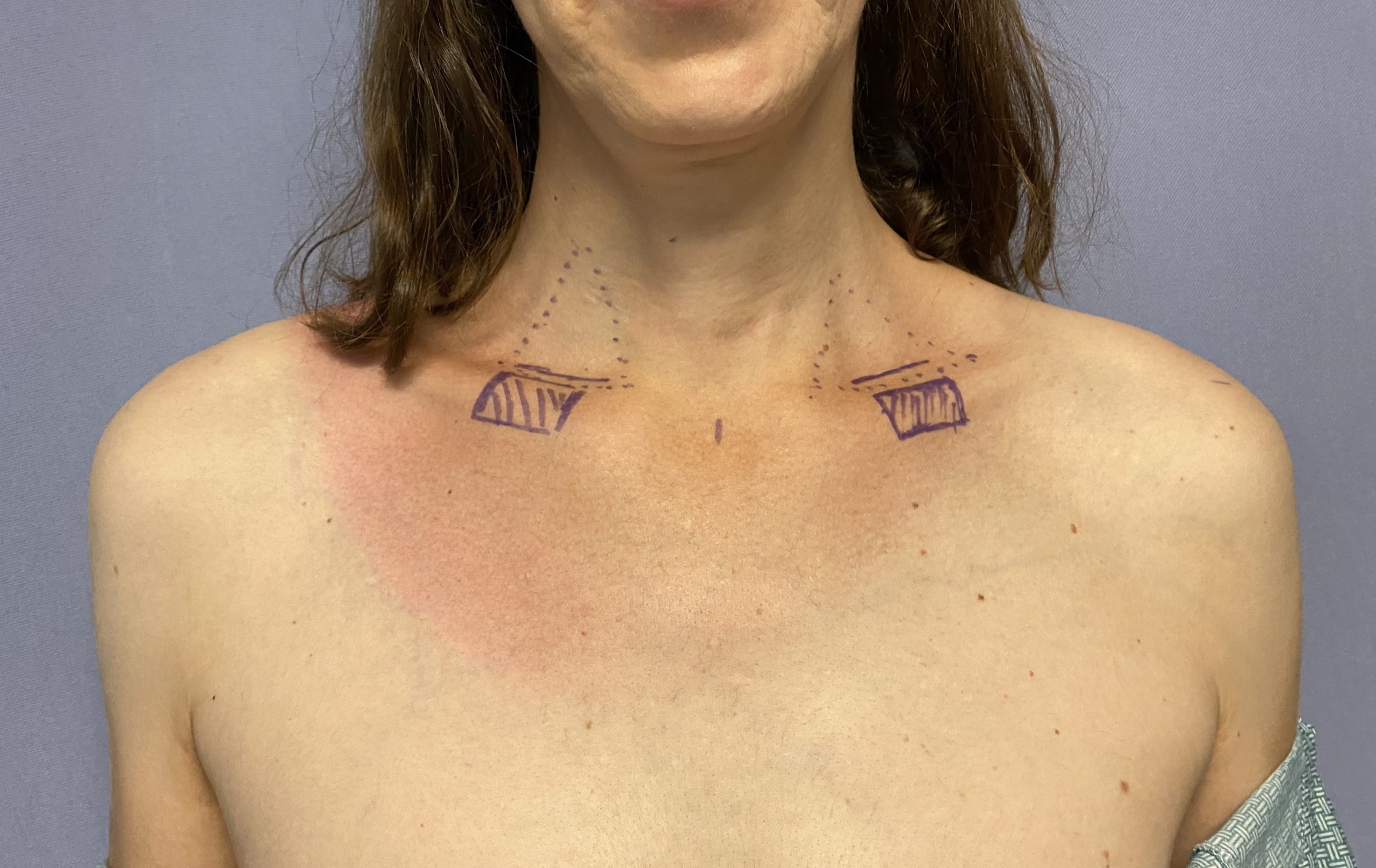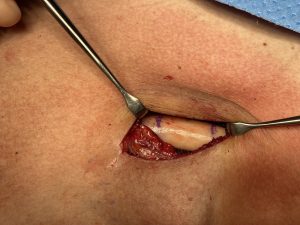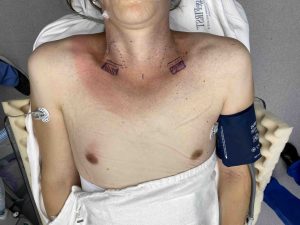Background: Shoulder narrowing by clavicle bone reduction is an effective procedure in body feminization efforts. The most important components of the procedure are how much bone to remove and what type of bone fixation should be used to support it as it heals. Patients understandably focus on how much bone is to be removed as in the end the aesthetic effects of the procedure are directly related to the bone length removed.
When I first started performing shoulder narrowing surgery the initial bone removal lengths were 2cms. As the procedure has evolved greater lengths are being done and the typical bone removed now for most is 2.5cms per side. While such lengths of bone removal is effective for all patients, not all patients are the same height or have the same length of the clavicle bone. Thus in really tall patients (e.g., 6’ or more) would 2.5cm length removal has the same effect as, for example, someone at 5’6” tall. One would presume and, as a result in these taller patients I have pushed the amount of clavicle bone removal up to 3cms.
The interesting question from the opposite perspective is how far could you go in bone removal until it would create a problem as every aesthetic procedure when pushed to the ‘extreme’ will encounter complications.The two potential complications with ‘extreme’ clavicle bone removal are: 1) an inability to get the two cut ends of the bone together intraoperatively and 2) shoulder range of motion limitations after surgery. The orthopedic literature speaks to the second one with clinical evidence from unrepaired clavicle fractures that greater than 30% loss of clavicle length adversely impacts shoulder range of motion to some degree. Using a typical clavicle length of 15cms it would then take 4.5cms of bone removal to create this problem…a length that is significantly beyond the amount that is removed.
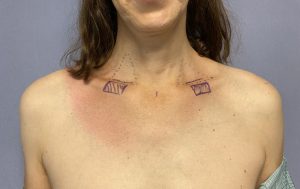
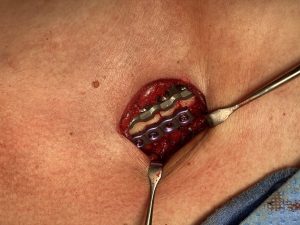
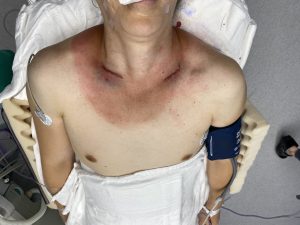

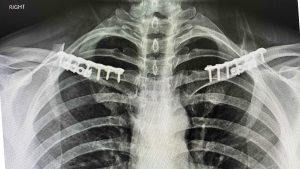
While I used various types of bone fixation for clavicle osteotomies her case presented several important considerations in which ‘maximal’ bone security was needed. Between being tall with long arms and having 3cms of bone removed the movement of the arms may place greater stress on the osteotomy site. She was also from an eastern European country and came for surgery by herself…all factors which potentially is a higher risk of complications due to the need for travel as well as having to do more to take care of herself. Because the additional plate is in an anterior position it has no risk of visibility so the added insurance to provides has negative tradeoffs.
Case Highlights:
1) Larger amounts of clavicle reduction bone removal should be done in taller patients.
2) With larger shoulder reduction movements double plate fixation of each osteotomy site may be prudent to lessen the risks of potential complications.
3) Taller patients may also have thicker cross-sectional diameters of the clavicle so longer screws may be needed for complete bicortical screw fixation.
Dr. Barry Eppley
Indianapolis, Indiana

